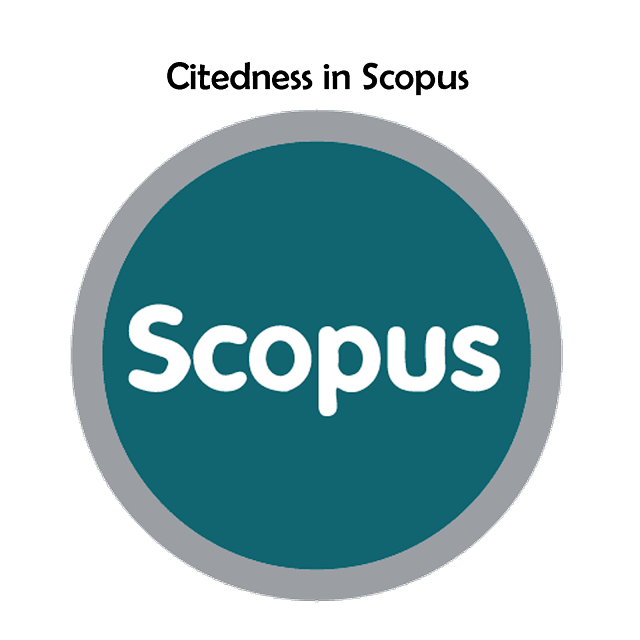Adaptive Hint Generation for Educational Games Using Fuzzy Logic
Abstract
The increasing interest in programming education has led to a wide variety of learner abilities. However, existing learning media often remain fragmented, necessitating the development of adaptive tools to cater to learners of varying skill levels. This study employs fuzzy logic to generate dynamic hints for players struggling to solve programming challenges in an educational game. The effectiveness of the system was evaluated through both simulation and real-world experiments. Simulation results indicate that the fuzzy logic system successfully generates personalized hints, with the highest frequency of hints provided to beginner players. Real-world testing using the GUESS-18 framework demonstrated high playability and excellent usability scores for the game.
Keywords
Full Text:
PDFReferences
A. Arief, M. Muhammad, and F. Amin, “Development Of Educational Game Using GDLC Method: A Case Study Of Algorithm And Data Structures Course,” IJIS Indonesian Journal on Information System, vol. 8, no. 2, pp. 120–125, 2023.
J. Y. Arosquipa Lopez, R. N. Nuñoncca Huaycho, F. I. Yallercco Santos, F. T. Mendoza, and F. H. Rucano Paucar, “The Impact of Serious Games on Learning in Primary Education: A Systematic Literature Review,” International Journal of Learning, Teaching and Educational Research, vol. 22, no. 3, pp. 379–395, Mar. 2023, doi: 10.26803/ijlter.22.3.23.
A. Christopoulos, S. Mystakidis, E. Cachafeiro, and M. J. Laakso, “Escaping the cell: virtual reality escape rooms in biology education,” Behaviour and Information Technology, vol. 42, no. 9, pp. 1434–1451, 2023, doi: 10.1080/0144929X.2022.2079560.
M. A. Miljanovic, J. Bradbury, M. A. Miljanovic, and J. S. Bradbury, “A Review of Serious Games for Programming,” in Serious Games: 4th Joint International Conference, 2018. [Online]. Available: https://www.researchgate.net/publication/327663695
J. P. da Silva and I. F. Silveira, “A systematic review on open educational games for programming learning and teaching,” International Journal of Emerging Technologies in Learning, vol. 15, no. 9, pp. 156–172, 2020, doi: 10.3991/ijet.v15i09.12437.
N. Behnamnia, A. Kamsin, M. A. B. Ismail, and S. A. Hayati, “A review of using digital game-based learning for preschoolers,” Journal of Computers in Education, vol. 10, no. 4, pp. 603–636, Dec. 2023, doi: 10.1007/s40692-022-00240-0.
S. Xinogalos and S. Eleftheriadis, “Office Madness: Investigating the impact of a game using a real life job and programming scenario on player experience and perceived short-term learning,” Entertain Comput, vol. 44, p. 100521, Jan. 2023, doi: 10.1016/j.entcom.2022.100521.
K. Chrysafiadi, M. Kamitsios, and M. Virvou, “Fuzzy-based dynamic difficulty adjustment of an educational 3D-game,” Multimed Tools Appl, vol. 82, no. 18, pp. 27525–27549, Jul. 2023, doi: 10.1007/s11042-023-14515-w.
J. McBroom, I. Koprinska, and K. Yacef, “A Survey of Automated Programming Hint Generation -- The HINTS Framework,” ACM Computing Surveys (CSUR) , vol. 54, no. 8, pp. 1–27, Aug. 2021, doi: 10.1145/3469885.
R. Damaševičius, R. Maskeliūnas, and T. Blažauskas, “Serious Games and Gamification in Healthcare: A Meta-Review,” Feb. 01, 2023, MDPI. doi: 10.3390/info14020105.
P. Wilkinson, “Brief history of serious games,” in Lecture Notes in Computer Science (including subseries Lecture Notes in Artificial Intelligence and Lecture Notes in Bioinformatics), Springer Verlag, 2016, pp. 17–41. doi: 10.1007/978-3-319-46152-6_2.
A. Kaffi, M. Rizqi, G. A. Laksono, A. Julian, and A. B. Gumelar, “The Development of Interactive Games for Covid-19 Prevention Using Indonesian Health Protocols,” JURNAL TEKNIK INFORMATIKA, vol. 15, no. 2, pp. 101–109, Dec. 2022, doi: 10.15408/jti.v15i2.25649.
I. Millington, AI for Games. CRC Press, 2019.
S. Mitaim and B. Kosko, “What is the best shape for a fuzzy set in function approximation?,” in Proceedings of IEEE 5th International Fuzzy Systems, IEEE, 1996, pp. 1237–1243. doi: 10.1109/FUZZY.1996.552354.
M. H. Phan, J. R. Keebler, and B. S. Chaparro, “The Development and Validation of the Game User Experience Satisfaction Scale (GUESS),” Hum Factors, vol. 58, no. 8, pp. 1217–1247, Dec. 2016, doi: 10.1177/0018720816669646.
J. R. Keebler, W. J. Shelstad, D. C. S. Google, B. S. Chaparro, and M. H. Phan, “Validation of the GUESS-18: A Short Version of the Game User Experience Satisfaction Scale (GUESS),” J Usability Stud, vol. 16, no. 1, 2020, [Online]. Available: http://uxpajournal.org.
“GitHub - ehsan-mohammadi/Another-LightBot: A clone of LightBot game made with Unity3D.” Accessed: Oct. 10, 2024. [Online]. Available: https://github.com/ehsan-mohammadi/Another-LightBot
G. Lampropoulos, E. Keramopoulos, K. Diamantaras, and G. Evangelidis, “Augmented Reality and Gamification in Education: A Systematic Literature Review of Research, Applications, and Empirical Studies,” Jul. 01, 2022, MDPI. doi: 10.3390/app12136809.
S. S. Farooq, H. Rahman, S. A. N. Raza, M. Raees, and S. K. Jung, “Designing Gamified Application: An Effective Integration of Augmented Reality to Support Learning,” IEEE Access, vol. 10, pp. 121385–121394, 2022, doi: 10.1109/ACCESS.2022.3221473.
DOI: https://doi.org/10.15408/jti.v18i1.41893
Refbacks
- There are currently no refbacks.
Copyright (c) 2025 Anggina Primanita, Hadipurnawan Satria, Muhammad Qurhanul Rizqie, Ananda Haykel Iskandar, Wibisena Nugraha

This work is licensed under a Creative Commons Attribution-ShareAlike 4.0 International License.
3rd Floor, Dept. of Informatics, Faculty of Science and Technology, UIN Syarif Hidayatullah Jakarta
Jl. Ir. H. Juanda No.95, Cempaka Putih, Ciputat Timur.
Kota Tangerang Selatan, Banten 15412
Tlp/Fax: +62 21 74019 25/ +62 749 3315
Handphone: +62 8128947537
E-mail: jurnal-ti@apps.uinjkt.ac.id

Jurnal Teknik Informatika by Prodi Teknik Informatika Universitas Islam Negeri Syarif Hidayatullah Jakarta is licensed under a Creative Commons Attribution-ShareAlike 4.0 International License.
Based on a work at http://journal.uinjkt.ac.id/index.php/ti.
JTI Visitor Counter: View JTI Stats



